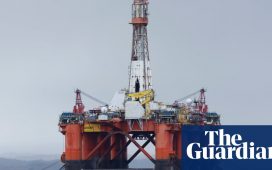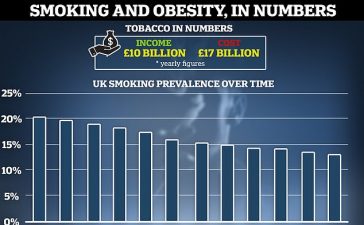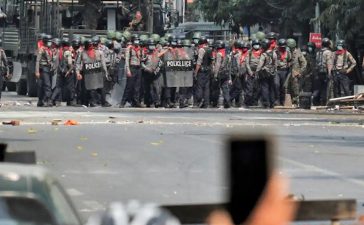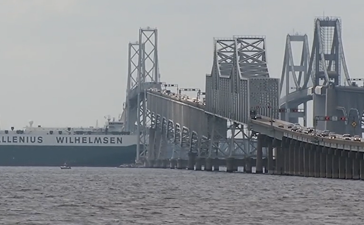In the far southeast of Bolivia, the cloud forest of the Tariquía reserve is accessible only by a few dirt paths that quickly become impassable with heavy rain. Local people say that, not so long ago, it could be a two-day horse ride just to communicate with the outside world.
That remoteness helped preserve Tariquía. But this protected area is now the frontline for Bolivia’s extractive activities, as the leftist government of Luis Arce scours the country for gas reserves that could keep its fossil-fuel model of development running – whether or not communities welcome drilling.
“[Exploitation of] Tariquía was inevitable with the continuation of that [extractivist] model,” says Dr Penelope Anthias, a Durham University geographer who has worked in the reserve. “Protected areas are the new extractive frontier.”
Gas extraction is a key strategic policy for Movimiento al Socialismo (MAS), or Movement for Socialism, Bolivia’s main political party, now led by Arce. Shortly after coming to power in 2006, the then president Evo Morales nationalised the oil and gas industry, forcing companies to renegotiate their contracts with the state.
The money generated by nationalisation bankrolled social programmes and built up foreign exchange reserves. Meanwhile, leftist leaders won election after election, promising to transform the state with the rural and Indigenous working class front and centre.
Bolivia’s gas exports peaked in 2013 at $6bn (£4.74bn), with taxes providing half of the state’s income. When the commodities boom ended, they collapsed to a third of that.
Since then, the government has run a yearly deficit, while its reserves – most of which are in gold – more than halved last year, with foreign exchange falling to just $166m (£132m) as it spent heavily to protect the currency’s artificially high exchange rate with the dollar. If Bolivia is forced to abandon its “dollar peg”, the boliviano could crash in value, putting Bolivia’s economic stability, Arce’s government and MAS’s political project at risk.
This was a crisis foretold: Bolivia’s gas production from ageing fields had been falling for years, against a backdrop of fluctuating global commodity prices.
However, rather than trying to change its economic model, the government responded by opting to look for new fossil-fuel reserves, opening up protected areas for oil and gas exploration.
Bolivia has 22 national protected areas covering 16% of its territory. Many hold oil and gas concessions, but these were largely frozen until 2015, when a government decree gave the green light to extraction, as long as companies mitigated any environmental damage and contributed 1% of their investment towards local economic development.
At the same time, the management plans of most protected areas were updated, with a trend towards changing zoning laws to allow extractive projects. In the Tariquía national flora and fauna reserve, the area where extractive activities are strictly forbidden was reshaped so prospective gas wells fell outside it.
Shortly afterwards, the state gas company YPFB signed contracts with private companies to explore two parts of the reserve: Canton Tariquía and Chiquiacá.
As in all of Bolivia’s protected areas, there are campesino (peasant) and Indigenous communities in Tariquía. Many have been there for generations, predating the reserve’s creation in 1989. They generally subsist on farming, ranching and beekeeping.
Despite the picturesque setting, life in Tariquía can be challenging. So when the gas companies appeared, local people did not dismiss the prospect of drilling out of hand but instead sent a delegation to visit neighbouring communities in Chaco, the region with Bolivia’s most important gas fields.
“We wanted to see what the gas extraction had done for them,” says Francisco Romero, a community leader in Canton Tariquía. “And we heard from the locals that the development was false, that promises were not kept as soon as they gave permission.”
So began one of Bolivia’s most emblematic cases of resistance to the energy and mining industries.
Driving their opposition to the plans was the feeling within communities that their constitutional right to prior consultation had not been respected. They were not consulted prior to the decree that permitted drilling in protected areas or the remapping of Tariquía’s management plan; local activists criticised companies for starting exploration while consultations were continuing.
According to Nelly Coca, a leader in Chiquiacá, officials did not consult everyone, provided scant information and asked for identity documents and signatures in exchange for food and drink. They then used the signatures as proof of their consent. “It was a deception,” says Coca.
The opposition began in 2017 in Canton Tariquía, when communities marched to Tarija, the regional capital, in protest. By 2019, it had spread to Chiquiacá, where a five-month blockade was mounted to stop the drilling.
When news of the protests reached the regional and national media, it was probably the first time many Bolivians had heard of Tariquía. The publicity worked: the foreign companies pulled out, unwilling to face the mounting criticism. The pressure subsided.
But the respite was short-lived. The government has now found another way into the reserve through other communities that welcome gas extraction, persuaded by promises of improved living conditions.
This time, YPFB avoided Canton Tariquía and Chiquiacá, instead approaching communities in the south of the reserve, where there are fewer people, none of whom had been involved in previous protests. The company signed an agreement with the campesino organisation, the local authority in that part of the reserve.
The agreement commits the state and its companies to prioritise hiring and purchasing services from the communities, build a sugar-cane refinery, invest in irrigation and tourism projects, and provide scholarships.
after newsletter promotion
“They said our lives would improve,” says Wilma Galeán, who signed the agreement on behalf of the San Antonio community. “We’re rural people with great necessities. We want our lives to be better.”
The agreement in effect turned the local communities into guardians of the gas companies. Now roadblocks restrict the movement of people opposed to the projects and anyone who raises doubts becomes isolated.
San Antonio is one such community, according to Galeán. She says that, when – on behalf of her community – she asked the energy company for a report on the environmental impact of the development, and whether there would be compensation for damage, she was removed from her leadership role by the campesino organisation.
“As a campesino woman born here, it was the worst moment of my life when so many of the other authorities rejected me,” says Galeán.
Another community, Urukurena, made a similar demand and has since had the legal status of their organisation revoked. Maximiliano Queso, a community leader, claims this is retaliation.
“The conflict started when I began to demand our rights as Indigenous Guaraní,” says Queso. “We demanded a report on the environmental impact and they refused to give us this information.”
Despite the disagreements, Queso says he and Urukurena still welcome the gas companies. He reeled off a list of things they hope to receive in exchange: a road, a health clinic, a school and drinking water.
“They call me the opposition,” says Queso. “But I’m not against the company. I never was.”
In any case, the piecemeal resistance that has emerged in the south of the reserve is probably too little, and has come too late, to change the course of events. “The company is the state, and once they have entered, no one can stop them,” says Galeán. “We should have reacted sooner, it’s true. But we wanted to improve our lives.”
According to Jorge Campanini, an investigator at CEDIB, a Bolivian environmental and rights organisation based in Cochabamba, the situation in Tariquía illustrates how extractive projects are pushed through in Bolivia.
The initial consultation tends to focus on local leaders who support the government; where there is resistance, local organisations become divided. Meanwhile, those who back the project receive state support.
“This was one of the last forgotten corners of Bolivia,” says Campanini. “Then the government started building roads, alliances – and sympathies.”
For academics such as Anthias, Tariquía also reveals the contradiction at the heart of Bolivia’s model under the MAS governments of Morales and Arce: the nationalisation of fossil fuels was meant to drive a revolutionary agenda but ultimately limited Bolivia’s development.
According to her, the imperative to extract natural resources for poverty reduction will always prevail over Indigenous people’s autonomy or land rights.
“The MAS promised to re-found the state, but the dynamics of extractivism have been reproduced,” says Anthias. “In some ways, it is now even harder for people to resist extraction because they get told they’re standing in the way of development – not just economic development, but social development.”
“I think there are many ways in which the MAS government has not been as radical as some had hoped,” adds Anthias. “But we have to acknowledge that it’s difficult to move away from this form of development in countries such as those in Latin America.”
Whether Tariquía’s gas can be extracted in time to help stave off an economic crisis is open to question. Local people who oppose gas extraction were cheered in recent weeks by the rumoured failure of one of the exploratory wells on which the state gas company was betting. Romero thinks the government might realise that Tariquía’s gas will not be its salvation.
“We’re hoping they don’t find anything and with that, they leave,” says Romero. “That’s the hope we have.”










